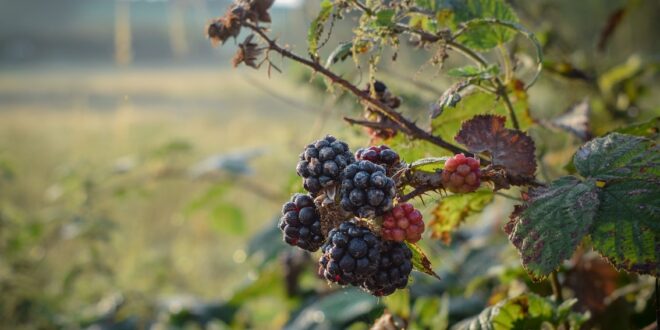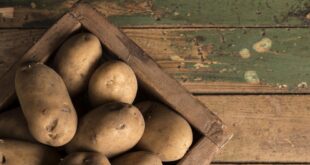Planting a fruit tree or berry bush is filled with excitement and hope, yet once these plants are in the ground, we often leave them to their own devices. But just as you wouldn’t dream of popping lettuces into the ground and leaving them to look after themselves, neither should you expect a fruit tree or berry bush to take care of itself. One of the most import aspects of looking after these food producers is caring for their immature fruit and berries. Here’s how to do it:
Guard against the elements
Unfortunately, no part of New Zealand is immune from summer hail storms, which can arrive at anytime, even well into summer. Young tree and berry fruit damaged by hail becomes blemished, and in serious cases, rots before it ripens. Net berry bushes before bud burst or blossoming, and listen closely to the weather forecast. A net will help protect plants from the worst of a hail shower, but better still is to have light weight frost cloths at the ready. When hail is forecast, drape the cloth over the netting, and hold it in place with spring clothes pegs.
Following very cold weather, a frost may be on the cards, and netting alone will not protect buds, blossom or young fruit. Use frost cloths to do this by draping it over the top of the plants and bringing it right down to ground level, pegging it in place (although if a frost is predicted, wind is unlikely to be an issue). If you don’t have a frost cloth, make do with an old light weight sheet or tablecloth. Remove cloth coverings as soon as a storm or frost has passed. This will allow light and heat to access the ripening fruit, and help keep conditions dry so fungal disease does not attack.
While it won’t be possible to protect all parts of a large tree, you can aim to protect sections of it. Better still, prune to keep fruit trees and berry bushes to a manageable height, or consider espaliering (the horticultural and ancient agricultural practice of controlling woody plant growth for the production of fruit, by pruning and tying branches to a frame).
Defend against birds
Many fruit and berry growers lose a potential harvest by not protecting against birds early enough. Birds are interested in your fruiting plants well before fruit set. This is because blossom and leaf buds are nutritious, and may be the only food available in early spring. Later, in summer, when birds are nesting and in search of quickly available food, even very young green fruit is desirable. Net your plants (or the portion of them you can safely reach) before they come into leaf or blossom, and well before fruit sets.
If netting your plants is beyond your capabilities, consider growing fruit and berries light in colour as they are usually less likely to be noticed by birds than red or purple fruit. Fruit which is lighter in colour when mature includes yellow raspberries, pale green-white alpine strawberries, selected varieties of gooseberry, white currants, white cherries, pears, and greengages.
Note: our beautiful native kereru (wood pigeons) are among those birds that do the most damage.
Protection from bugs and disease
Fruit trees (unless they are heritage varieties) require regular spraying for the likes of black spot, blight, leaf curl, powdery mildew, codling moth and a host of other potential ailments. This care doesn’t just happen in the trees’ dormant period. It continues on throughout the year, and can include the period when young, green fruit is on the tree. Because spraying for disease is a technical issue, consult your local garden centre for advice on what to use and when, and always ask first about organic spraying routines.
Some insect attack can be controlled through organic means. Applying a petroleum jelly ‘collar’ to a lower section of stems or trunk can help prevent crawling insects, such as earwigs, accessing the upper reaches of the plants. Corrugated cardboard ‘collars’ help mitigate the movement of codling moth larvae. Diatomaceous Earth (a natural substance available from garden centres) can put paid to insects that can harm young fruit and berries. Mix it with water and paint as a collar around the base of tree trunks or stems. It can also be scattered on the ground around fruit trees or berry bushes.
Give your young fruit and berries the care they require, and you will be rewarded with a delicious and plentiful harvest. It’s worth the effort!











bridget taylerson - 3 years ago
Can you tell me why our blueberries failed to ripen last year?